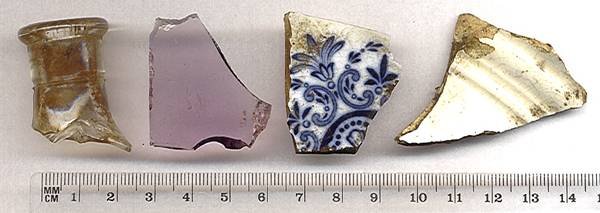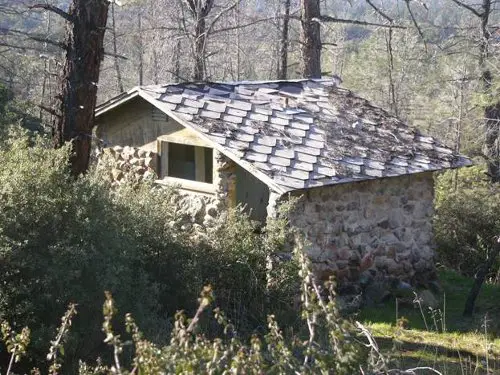
Conducted by Dr. John and Cheyanne Parker of Archeological Research in Lucerne, the findings help Lake County Land Trust directors preserve the site and determine best public activities at the park.
The study concludes that, as a Land Trust property, Rabbit Hill teaches us about the natural world, but it also contains important information about the history of Middletown.
As part of the study, Dr. Parker, a registered professional archaeologist, and Cheyanne, with 12 years archaeological field and lab experience, conducted a field inspection of Rabbit Hill.
“Historic records provide information about major events and prominent citizens in Middletown’s past, but no record of daily life for Middletown residents exists during the time a stage came through town once a week,” John Parker said.
Items found in the historic archaeological site suggest general household refuse from the late 1800s, including pieces of ceramic ware, glass bottles, a soldered milk can, and a brass kerosene lamp reservoir.
A concrete cistern reinforced with scrap pieces of farm equipment, suggesting late 1800 or early 1900 construction, was most likely the remains of a water tank that would have allowed gravity flow of water down slope to a residence.
Corrugated roofing material, perhaps remains of a kid’s fort, and a sheep shear stamped with “Keiser Made in the USA” were also found.
Though no structure remains of Huke and Skee Hamann’s residence, the area is marked by concrete on rocks and embedded telephone pole sections. One rock had a concrete base where a commemorative plaque was placed. Local lore says that three embedded rail pieces once supported a lighted cross atop Rabbit Hill.
Remains of a stone lavatory, constructed in 1950s, is slightly downhill from where the Hamanns lived.

Little remains of their residence that is of historic or scientific value; however, Rabbit Hill itself is significant due to the association with the Hamanns.
The Hamanns lived on Rabbit Hill between the 1950s and 1970s. They used their land’s magnetic attraction as a way to introduce Middletown’s youth to the natural world and the concept of living with, not on, the earth.
The couple left Rabbit Hill to Sonoma County’s Madrone Audubon Society, which later deeded the property to Lake County’s Land Trust for protection.
The Lake County Land Trust is a private, nonprofit organization dedicated to the preservation of Lake County’s unique natural habitats and open spaces.
In addition to Rabbit Hill, the group owns and operates the Rodman Slough Preserve at 6350 Westlake Road, Upper Lake.
For more information about Lake County Land Trust, go to www.lakecountylandtrust.org . Follow the land trust on Twitter at http://twitter.com/lclandtrust and on Facebook at http://www.facebook.com/pages/Lower-Lake-CA/Lake-County-Land-Trust/137282176534?ref=ts .
Follow Lake County News on Twitter at http://twitter.com/LakeCoNews and on Facebook at http://www.facebook.com/pages/Lake-County-News/143156775604?ref=mf .